Introduction
Ground-mounted solar panels are an innovative solution for harnessing solar energy effectively. Unlike roof-mounted systems, these panels are installed on the ground, making them a versatile choice for both home solar system installation and commercial solar panel installation. The significance of ground-mounted systems lies in their ability to be positioned optimally for maximum sunlight exposure, enhancing energy production.
In this guide to ground-mounted solar panels, we will delve into:
- Different types of commercial solar panels and home systems.
- Advantages such as flexibility and accessibility.
- Installation considerations including necessary equipment and costs.
- Solar panel repair services required for optimal performance.
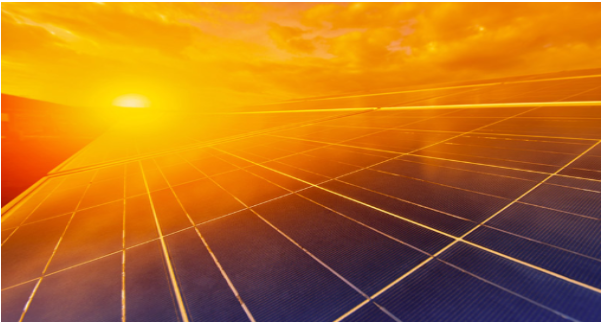
By understanding these key aspects, you will be better equipped to decide if ground-mounted solar panels are the right choice for your home solar panel installation or commercial needs.
Understanding Ground-Mounted Solar Panels
What Are Ground-Mounted Solar Panels?
Ground-mounted solar panels are photovoltaic (PV) systems installed directly on the ground, using a support structure to hold the panels in place. These systems are perfect for both homes and businesses where a south-facing roof isn’t available or preferable. Unlike roof-mounted systems, ground-mounted installations can be positioned and angled to get the most sunlight.
How Do They Compare to Roof-Mounted Systems?
When looking at ground-mounted solar systems versus roof-mounted ones, there are a few key differences:
- Flexibility: Ground-mounted systems can go anywhere there’s open space and sunlight, while roof-mounted systems are stuck with the roof’s direction and size.
- Accessibility: It’s easier to fix or clean ground-mounted panels since you don’t need ladders or scaffolding.
- Energy Production: Ground-mounted systems usually produce more energy because they can be set up at the best angles without worrying about the roof’s shape.
Why Choose Ground-Mounted Solar Panels?
Here are some reasons why ground-mounted solar panels might be a better choice for you:
- Flexibility: You can adjust ground-mounted panels throughout the year to keep them facing the sun. They work well on different types of land, whether it’s flat, hilly, or uneven.
- Accessibility: Cleaning and fixing these panels is simpler. You won’t need any special tools or gear that you’d typically need for getting on a roof.
- Higher Energy Production: Some ground-mounted systems can move with the sun during the day, soaking up even more energy. You might have more space on the ground than on your roof, meaning you can install more panels and generate more power.
By knowing these basics about ground-mounted solar panels, you can see why they might be better than traditional rooftop setups.
Types of Ground-Mounted Solar Panel Systems
- Standard Ground-Mounted Systems
Standard ground-mounted systems are the most common type of solar panel installations found in residential and commercial settings. These systems feature a few key components:
- Tilted Racking System: The racking system is designed to hold the solar panels at an optimal angle to maximize sunlight exposure. This tilt can be adjusted based on geographical location and seasonal changes.
- Concrete Pier Foundations: The stability of the system is ensured by concrete pier foundations. These foundations involve digging holes several feet deep, placing poles into them, and then filling them with concrete. This setup ensures that the structure remains secure and can withstand various weather conditions.
Standard ground-mounted systems are popular because they offer flexibility in placement, allowing you to choose the most sun-exposed areas on your property. They are especially beneficial for properties that lack sufficient roof space or have roofs that are not structurally ideal for solar installations.
- Pole-Mounted Solar Panel Systems
Pole-mounted solar panel systems provide another effective option for harnessing solar energy. These systems use either driven piers or helical piles:
- Driven Piers: Installation involves using special machinery to drive large poles deep into the ground. The poles support a rectangular frame that holds the solar panels.
- Helical Piles: Helical piles resemble giant screws and are installed by screwing them deep into the ground using specialized equipment. These piles provide a robust foundation capable of supporting the weight and wind load of the solar panels.
Pole-mounted systems offer increased height, which can help avoid shading from nearby obstacles and maximize sun exposure throughout the day.
- Ballasted Systems
Ballasted systems are unique because they do not require penetration into the ground or roof, making them suitable for sites where such penetration is not feasible:
- Heavy Concrete Footings: Instead of being anchored into the ground, these systems use heavy concrete blocks to hold the racking system in place. This feature makes ballasted systems easy to install and relocate if necessary.
Ballasted systems are ideal for locations with limited space or specific structural constraints where traditional mounting methods cannot be used.
In summary, each type of ground-mounted solar panel system—standard ground-mounted, pole-mounted, and ballasted—offers distinct advantages tailored to different site conditions and requirements. Understanding these options helps in selecting the most suitable system for maximizing energy production and efficiency on your property.
Enhancing Energy Absorption with Tracking Systems
Tracking systems are essential for getting the most out of ground-mounted solar panels. They follow the sun’s path throughout the day, making sure panels get the best sunlight exposure, which boosts their efficiency and energy output.
How Tracking Systems Work
Tracking systems adjust the position of solar panels to follow the sun’s trajectory. This continuous alignment allows for maximum exposure to sunlight from dawn until dusk. The increased exposure directly translates to higher energy yields compared to static systems.
Types of Tracking Systems
There are two main types of tracking systems used in ground-mounted solar installations: single-axis trackers and dual-axis trackers.
- Single-Axis Trackers: Design: Single-axis trackers rotate on one axis, either horizontally (east to west) or vertically (up and down). Performance: These trackers are simpler and less expensive than dual-axis systems. They offer a significant boost in energy production by adjusting the panels’ angle to capture more sunlight throughout the day. Example Usage: Ideal for large-scale solar panel installations where cost efficiency is crucial.
- Dual-Axis Trackers: Design: Dual-axis trackers rotate on both horizontal and vertical axes. Performance: By providing two degrees of movement, these trackers offer superior performance, allowing panels to maintain an optimal angle relative to the sun at all times. This results in even higher energy output compared to single-axis trackers. Example Usage: Suitable for locations where maximizing energy production is essential, despite higher installation costs.
Understanding these differences can help you choose the right system for your ground-mounted solar panel installation, ensuring you reap the maximum benefits from your investment.
Installation Considerations for Ground-Mounted Solar Panels
Installing ground-mounted solar panels involves a detailed and labor-intensive process. Here’s an overview of what you can expect:
Necessary Equipment
- Heavy Machinery: Installing ground-mounted systems typically requires heavy machinery such as pile drivers, excavators, and cement mixers. These tools are essential for tasks like digging holes for foundations and setting up racking systems.
- Racking Systems: The racking system is crucial for supporting the solar panels. It needs to be robust enough to withstand various weather conditions.
Labor Costs
Labor costs can be significant due to the complexity of the installation:
- Skilled Labor: The use of specialized machinery necessitates hiring skilled laborers who are experienced in operating this equipment.
- Time Investment: The installation process is time-consuming, often requiring several days to weeks, depending on the size and complexity of the system.
Steps Involved
- Site Preparation: Clearing and leveling the site where the panels will be installed.
- Foundation Work: Digging holes and setting up concrete pier foundations or other types of supports.
- Racking Installation: Assembling and installing the racking system to hold the panels.
- Panel Mounting: Attaching solar panels to the racking system.
- Electrical Connections: Setting up wiring and connections to integrate with your home’s power system.
Understanding these considerations can help you better plan and budget for your home solar panel installation or commercial solar panel installation.
Cost Evaluation: Weighing Installation Expenses Against Potential Returns on Investment (ROI) from Increased Energy Production
Installation costs for ground-mounted solar panels tend to be higher than roof-mounted systems. This is mainly due to the need for additional materials and labor:
- Support structures: Ground-mounted systems require poles, racking, and concrete foundations, increasing material costs.
- Heavy machinery: Equipment like pile drivers is necessary for installation, adding to labor expenses.
- Permits and design plans: Ground installations are treated as independent construction projects, which can complicate permitting and increase design costs.
Despite these expenses, the potential return on investment (ROI) can be significant due to several factors:
- Higher energy production: Ground-mounted panels often have better energy absorption because they can be optimally oriented and equipped with tracking systems.
- Long-term savings: The enhanced efficiency of these systems translates into lower utility bills over time.
- Scalability: Larger installations are possible with ground-mounted systems, maximizing output and ROI.
Balancing these factors helps determine whether the initial costs outweigh the long-term benefits.
Maintenance Services for Optimal Performance of Ground-Mounted Solar Panels
Regular maintenance is crucial to ensure the efficiency and longevity of ground-mounted solar panels. Proper upkeep allows your system to function at its peak, maximizing energy production and protecting your investment.
Key Maintenance Practices
- Cleaning: Dust, debris, and bird droppings can accumulate on the panels, reducing their efficiency. Regular cleaning ensures maximum sunlight absorption.
- Inspection: Routine inspections help identify potential issues such as loose connections, damaged wiring, or structural wear. Early detection prevents costly repairs and downtime.
- Performance Monitoring: Monitoring systems track the energy output of your panels. A sudden drop in performance can indicate a problem that needs immediate attention.
Finding Professional Maintenance Services
Professional maintenance services offer specialized care tailored to ground-mounted installations. Here are some options:
- Local Solar Companies: Many solar companies provide maintenance packages that include regular inspections, cleaning, and repair services.
- Independent Technicians: Certified technicians can perform routine checks and repairs. Ensure they have experience with ground-mounted systems.
- Manufacturer Services: Some manufacturers offer maintenance services for their products. This can be beneficial as they are familiar with the specific requirements of their systems.
Regular maintenance keeps your ground-mounted solar panels operating efficiently, ensuring you get the most out of your investment over time.
Safety Considerations When Choosing Between Roof-Installed vs. Ground-Mounted Solar Panels
When evaluating the safety benefits of ground-mounted solar panels compared to roof-installed systems, there are several factors to consider.
Key Safety Advantages of Ground-Mounted Panels:
- Ease of Access: Ground-mounted solar panels are easier to access for both inspections and repairs. This eliminates the need for climbing onto roofs, which can be risky, particularly during adverse weather conditions.
- Reduced Risk of Falls: Maintenance and installation workers face a significantly lower risk of falls when working on ground-mounted systems. This is an important consideration for minimizing workplace accidents.
- Simplified Cleaning: Regular cleaning of ground-mounted panels is safer and more straightforward. Without the need to perform tasks at heights, maintenance becomes less hazardous and more efficient.
- Enhanced Inspection Capabilities: Ground-mounted systems allow for more frequent and thorough inspections. Technicians can easily walk around the panels, ensuring all components are functioning optimally without the added complexity of roof access.
Comparative Perspective:
Roof-installed solar panels inherently involve greater safety risks due to their elevated location. Tasks such as installation, routine maintenance, and unexpected repairs require workers to navigate slippery surfaces and steep pitches, increasing the likelihood of accidents. In contrast, ground-mounted panels provide a safer alternative by remaining at ground level. This accessibility not only protects maintenance personnel but also ensures that any issues can be promptly addressed, maintaining optimal energy production.
Evaluating these safety considerations can help you make an informed decision between roof-installed and ground-mounted solar panel systems based on your specific needs and priorities.
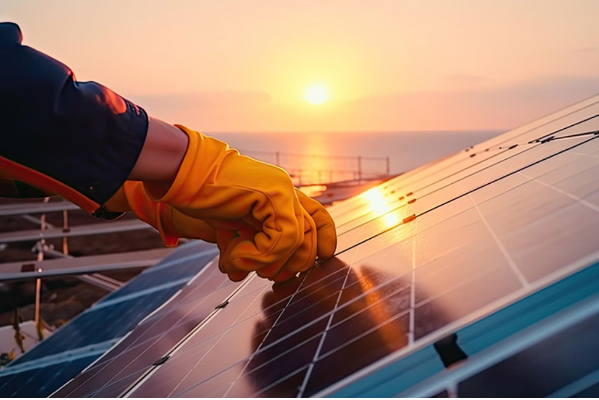
Conclusion: Embracing the Future with Ground-Mounted Solar Solutions
Ground-mounted solar panels are an efficient and flexible way to harness solar energy. They offer significant benefits such as higher energy production, ease of maintenance, and enhanced safety compared to roof installations.
Investing in ground-mounted systems can lead to substantial returns on investment while contributing to a sustainable future. Explore the potential of these systems to meet your energy needs effectively.
This guide to ground-mounted solar panels equips you with essential insights, helping you make informed decisions for your solar panel home installation or commercial solar panel installation project.

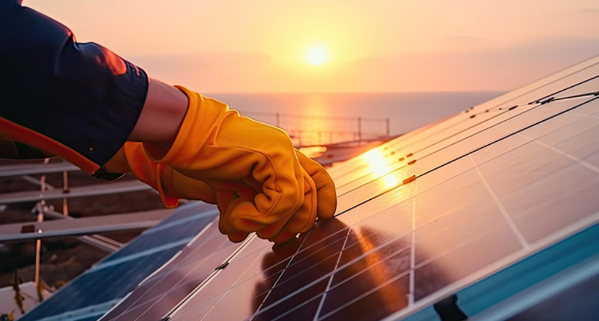
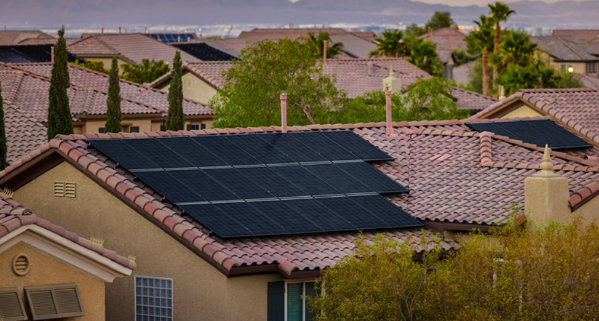
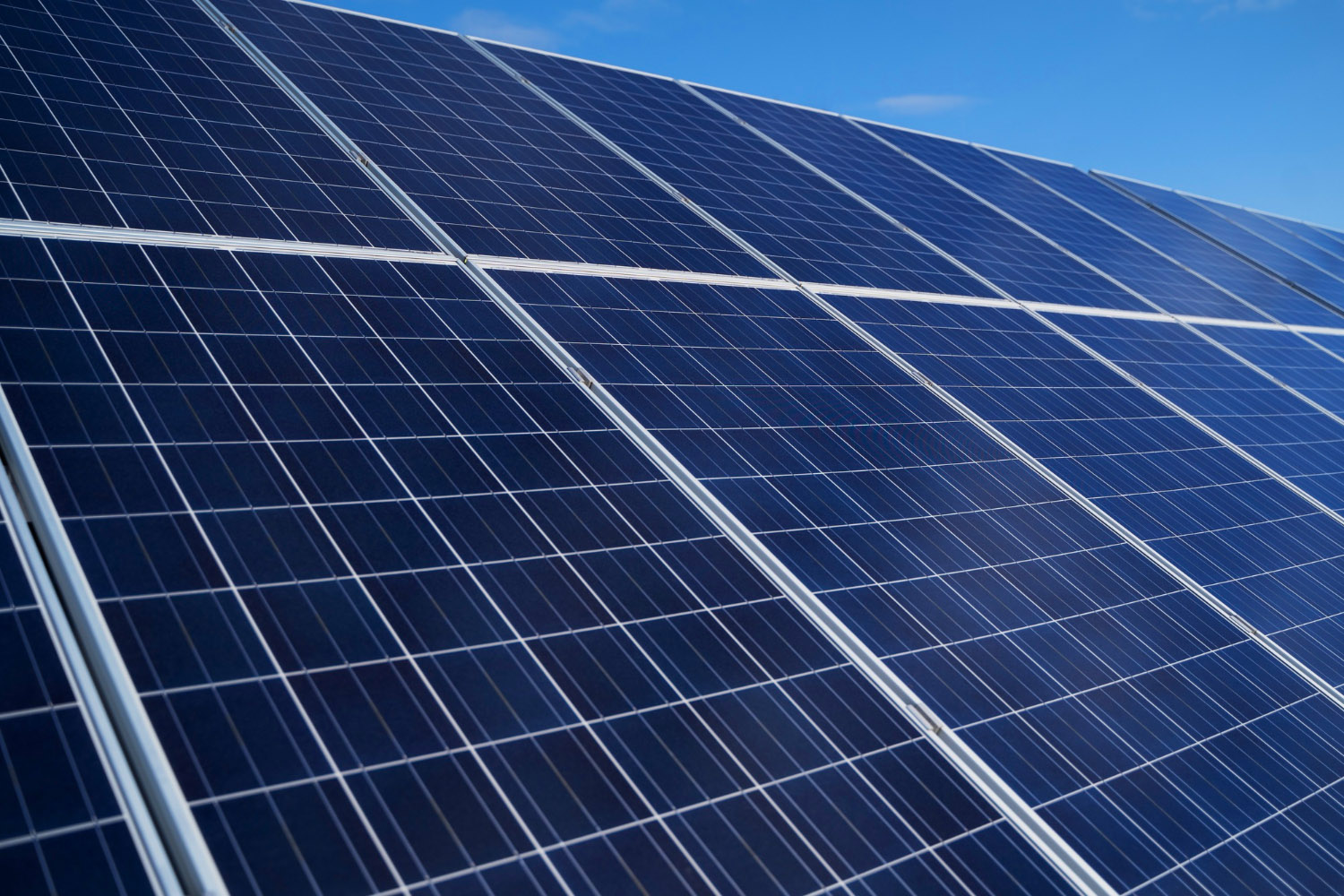
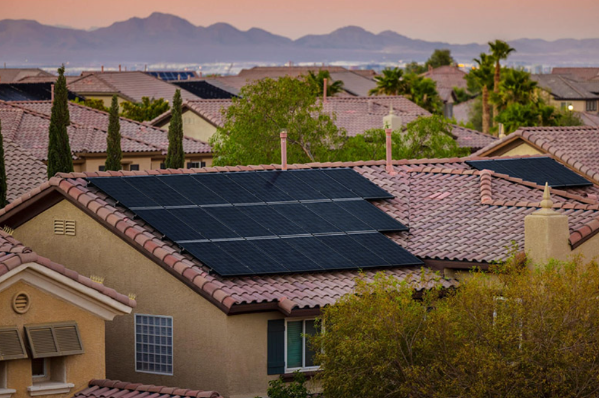

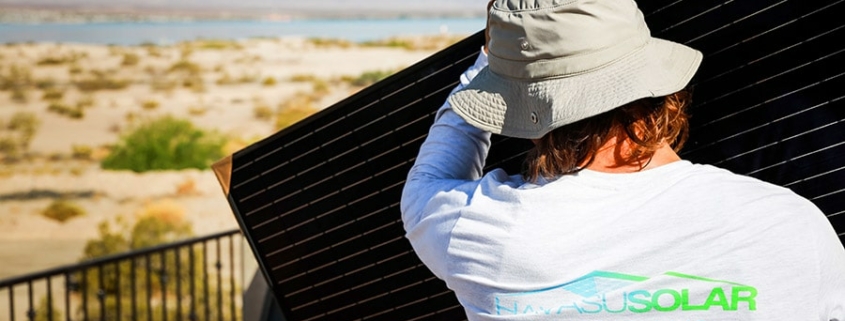
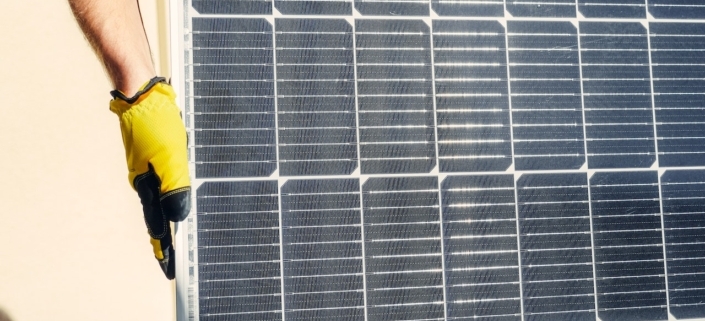
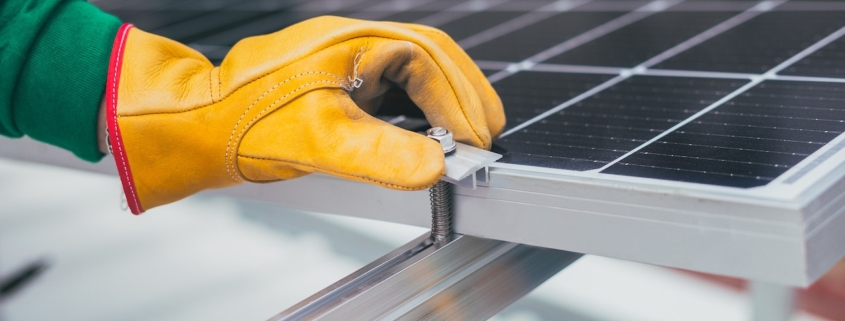
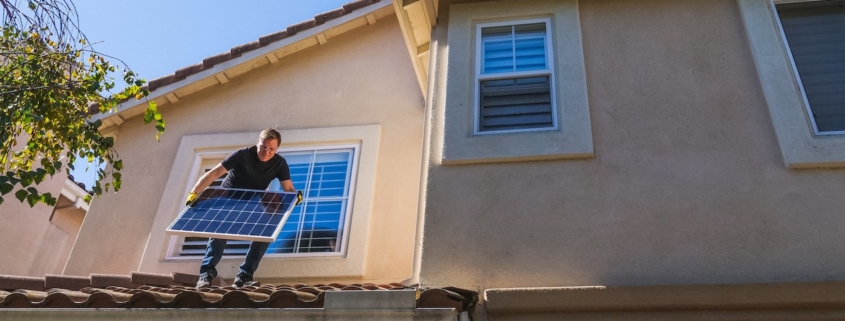


 Photo: PRWeb
Photo: PRWeb